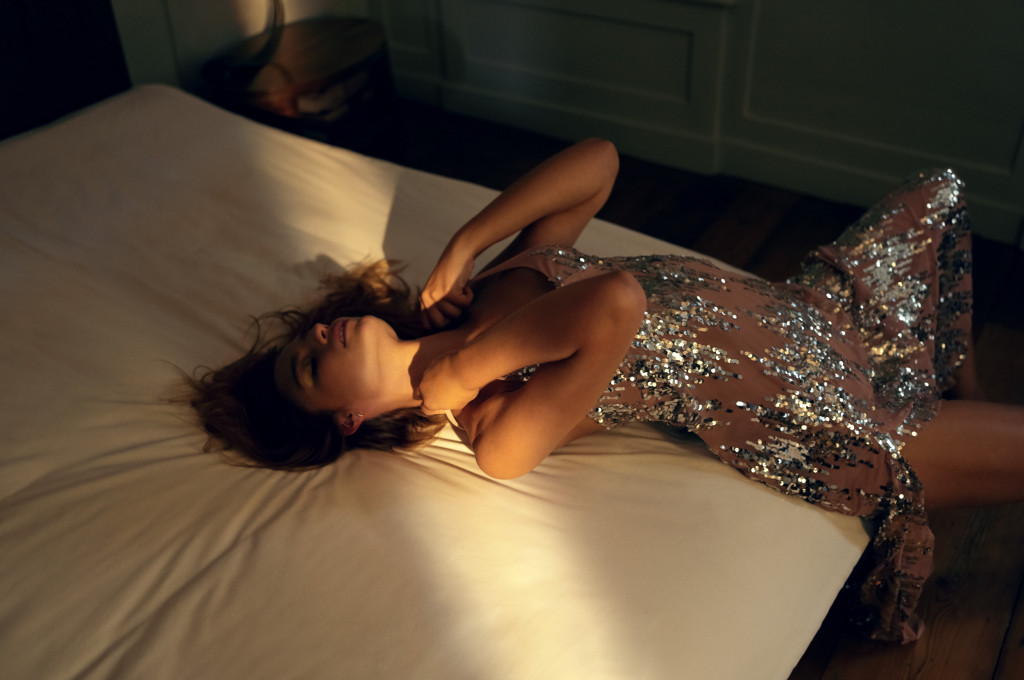
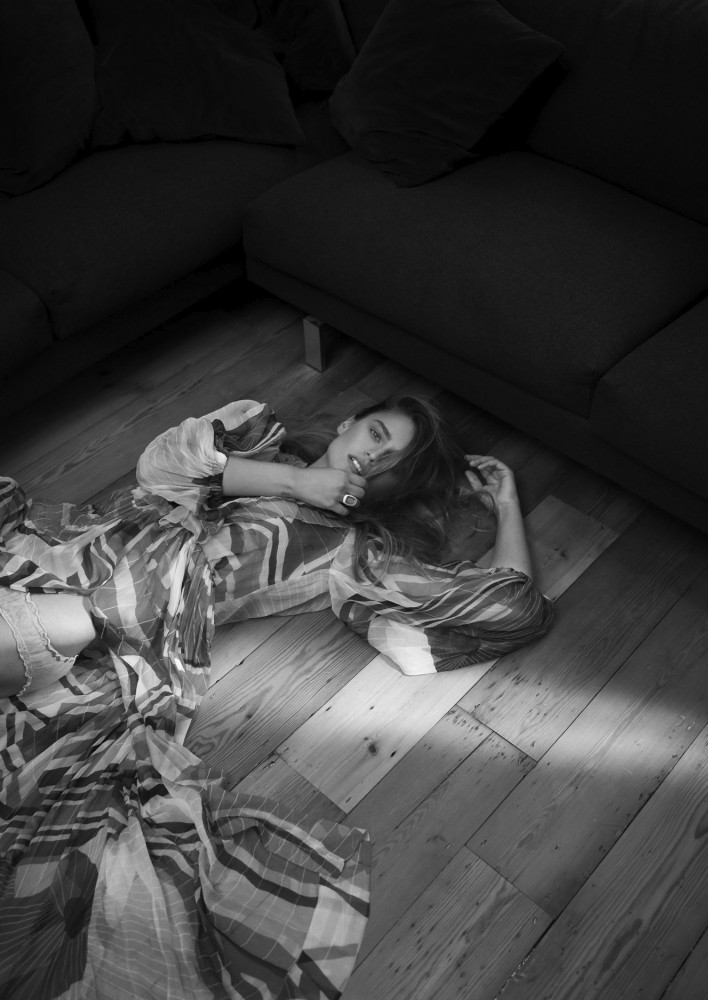

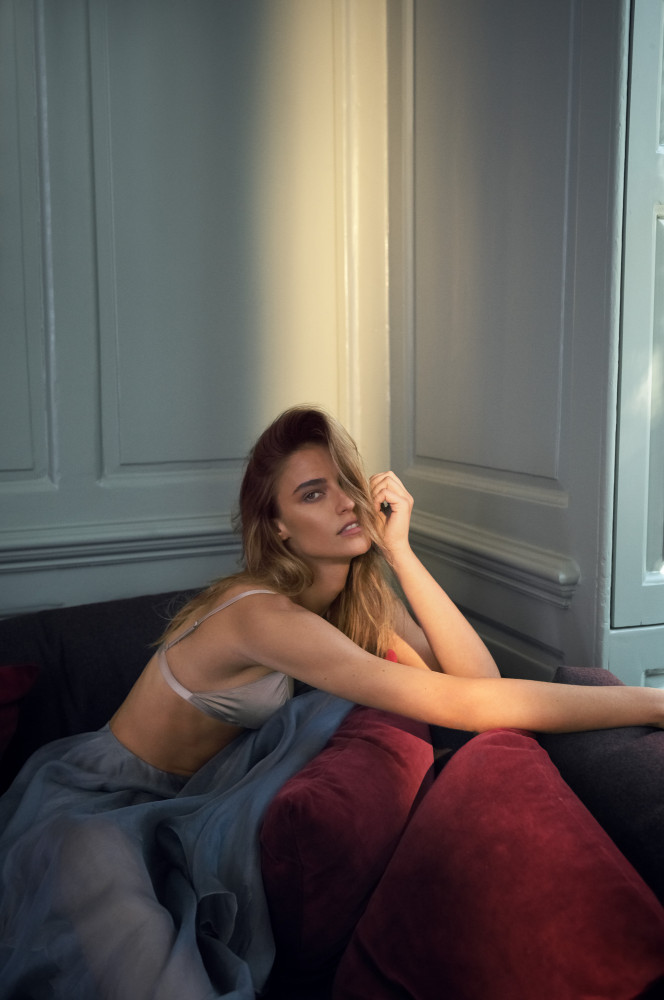
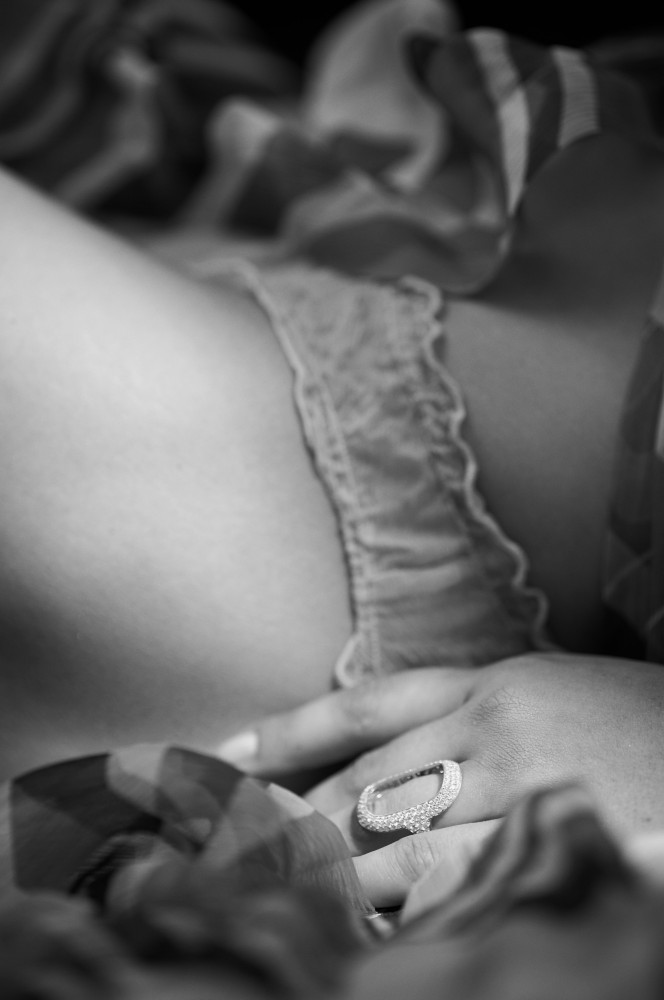

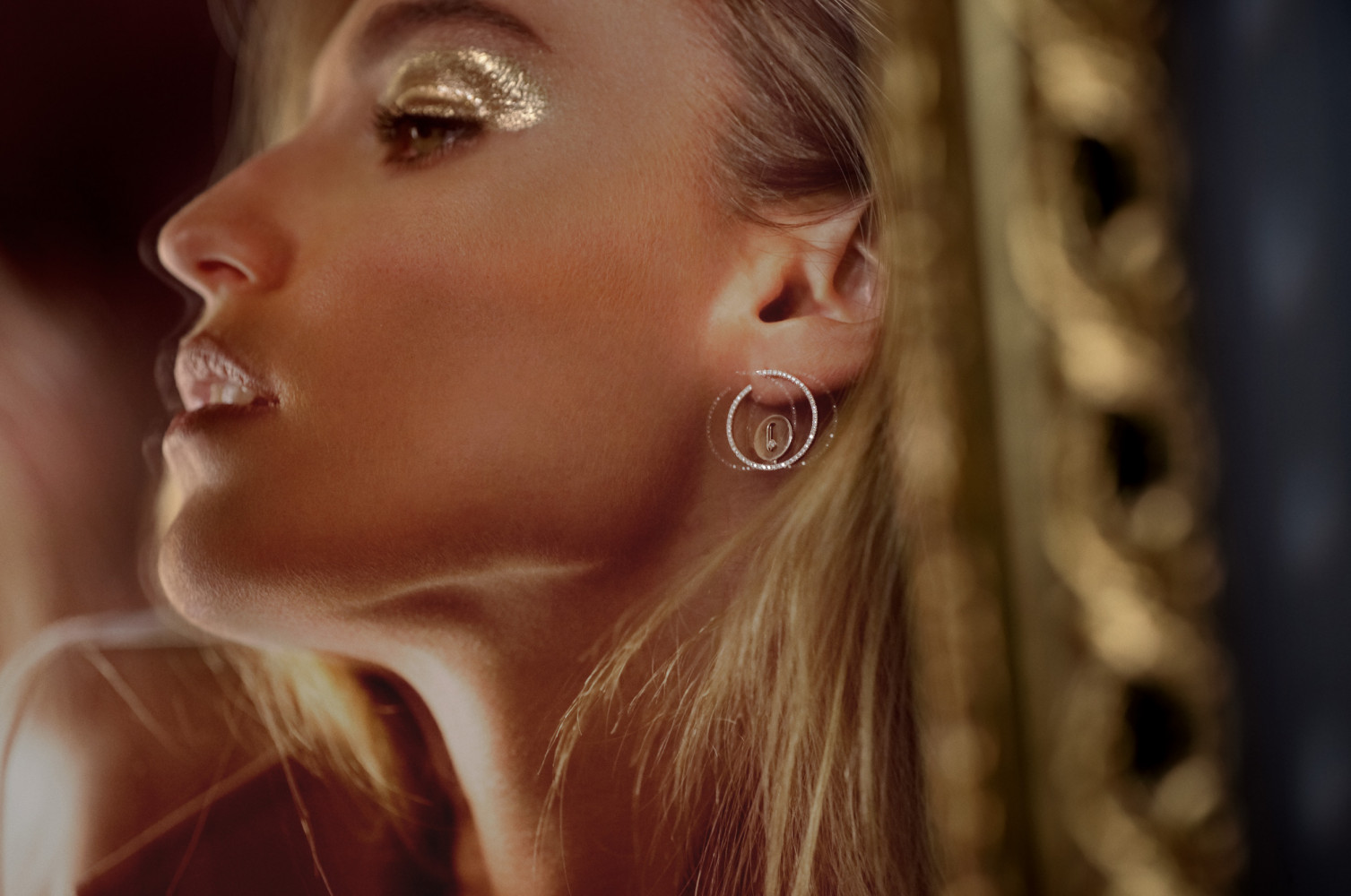
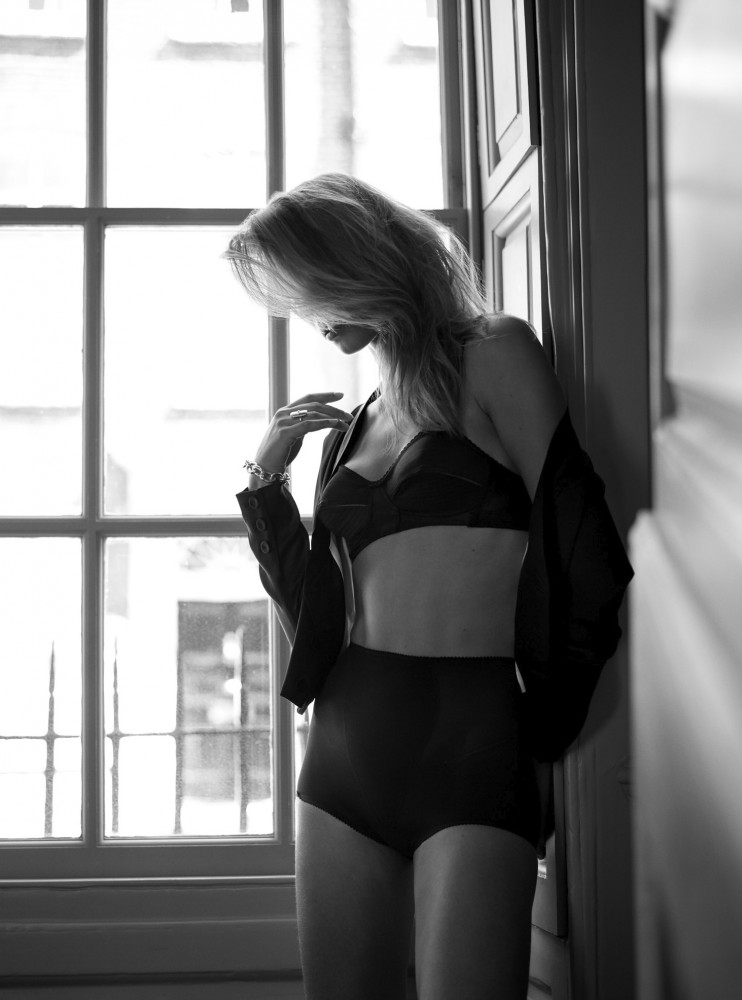
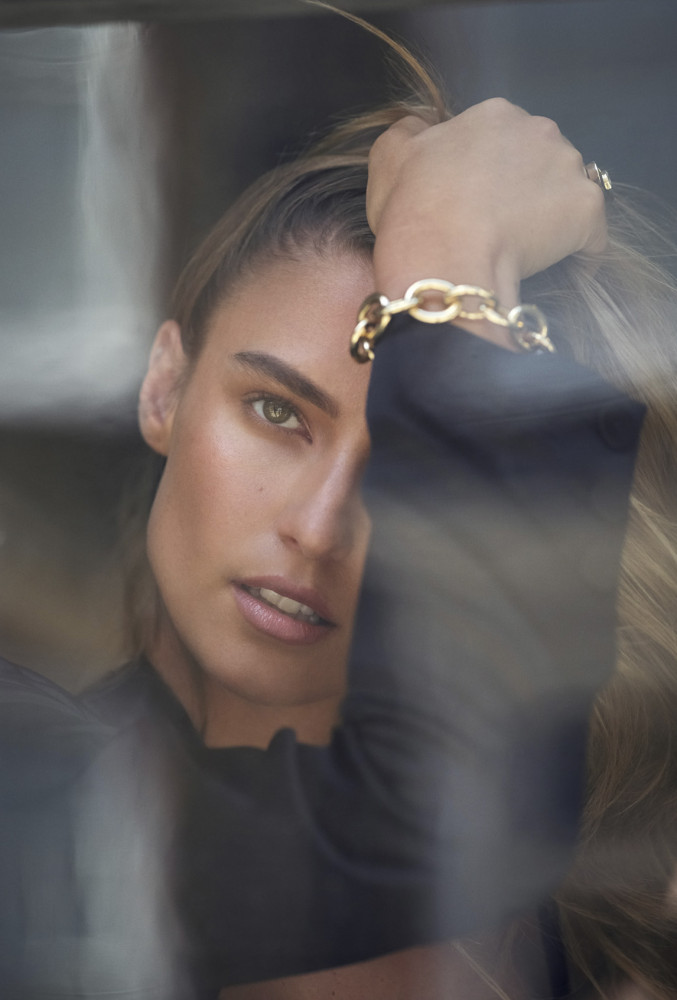
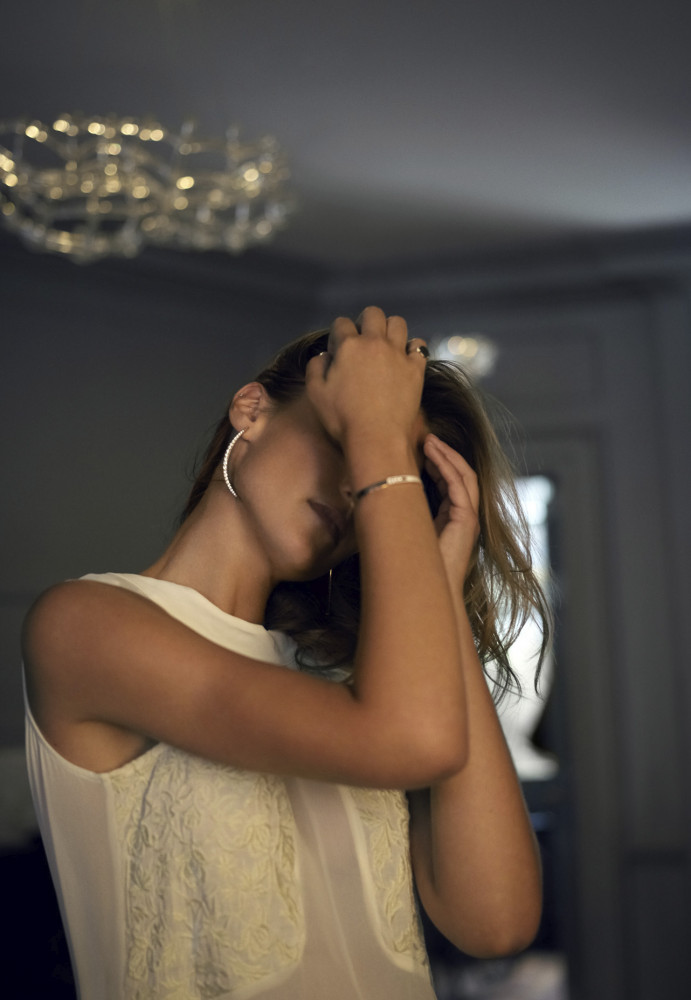
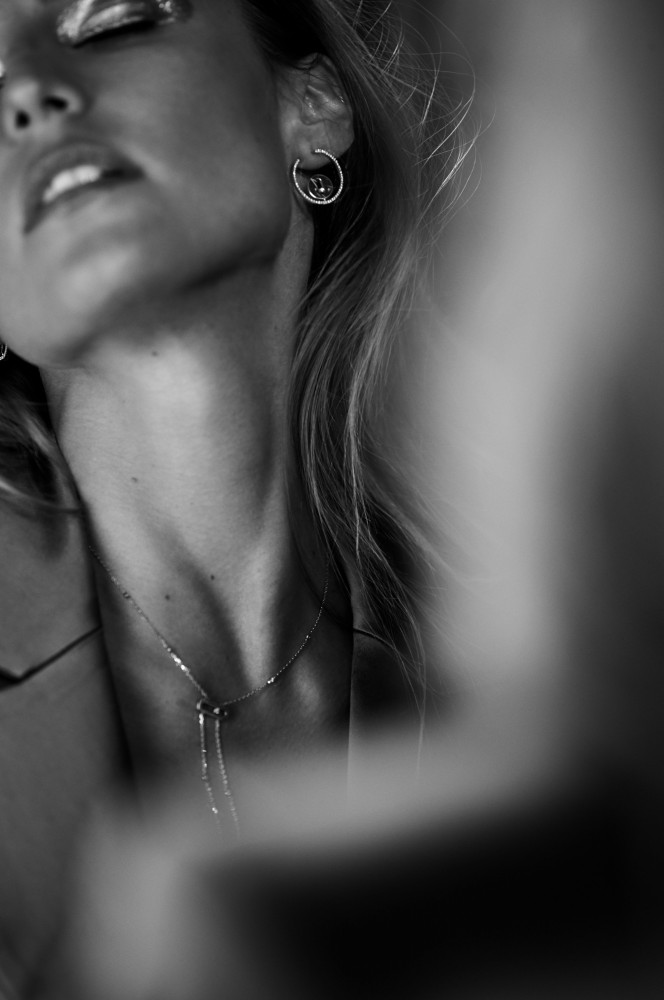













INTERVIEW
James Meakin

Photography James Meakin @ WIB Agency Model Fernanda Liz c/o Model Management Hamburg Art Director Tatiana Okorie Stylist Nathalie Riddle Hair Stylist Dan Martin @ Bryant Artists Makeup Artist Francesca Brazzo @ Wall Group Retouching Taylor Light Photographer's Assistants Craig Teunissen and Jeremy O'Donnell camera Leica S (Typ 007) with Elmarit-S 45 f/2.8 ASPH. (CS), Summarit-S 70 f/2.5 ASPH. (CS) and APO-Macro-Summarit-S 120 f/2.5 (CS)
In the lead-up to a shoot, fashion photographer James Meakin carefully considers how he will direct his models and orchestrate his scenes. Drawing inspiration from natural landscapes and evocative locations, he always aims to find new ways of conveying a narrative. In autumn 2019 the photographer – armed with his S007 and a storyline that could have come straight out of a movie – set out to showcase a jewellery collection in an entirely fresh presentation style.
Here he talks about where he finds inspiration, how he conceptualises his ideas, and why it is rare to see an unabridged fashion story on the pages of a magazine.
Your images not only look very cinematographic, but are also reminiscent of paintings. What other forms of art inspire you, and which artist do you particularly admire?
Growing up, I was always drawing and doing watercolour paintings. At one stage I thought I might become a graphic designer, but I’m probably too impatient – I’m all about spontaneity and seizing the moment. The camera gives me instant gratification. Early on in my career, I was bowled over by the work of photographers of the 1990s like Testino, David LaChapelle, Mert and Marcus and Nick Knight. And I relish the work of Guy Bourdin, Helmut Newton and Paulo Roverssi. I am still trying to understand how art and photography come together…I often find this ambiguous.
How did these role models help you develop your own way of seeing?
A South-African photographer named Crispian Plunkett was my greatest inspiration. He was a rebel, an unconventional soul who passed away before his time. When I need to dig deep, I visualise his spirit and approach, and try to see the world through his eyes. He was a genuinely brave creative. I’m much more pragmatic, but I love him for showing me who I could be, without ever saying a word. However, I’m never influenced by ‘influencers’ – I think that’s a generation thing.
Would you say that you took the cinematic quality of your images to an even more intense level in this series?
I think my generation has been strongly influenced by film and a visual revolution within cinematography. I have always had a filmic eye, I find that the composition and use of dramatic light come naturally to me. It’s why I am currently pursuing my interest in directing – I think my style translates well into film, and there is plenty of room to explore different concepts and your own imagination.
Where do you get your inspiration and shooting ideas from?
Natural landscapes and unusual places often spark editorial ideas, while many of my character references are inspired by film. I use fashion references to help illustrate my thoughts… Every shoot is preceded by extensive brainstorming and research. Instagram can also be a great resource these days in terms of finding locations and inspiring ideas.
From a previous collaboration, I know you to be someone who puts a lot of effort into conceptualising a shoot. What was your thought process behind ‘Can’t Get No Sleep’?
The series was conceived as a little reportage about the end of a night out – a fly-on-the-wall documentary of something that turns into more than a simple after party. We watch a beautiful, empowered woman undergoing a seductive transition – a harmless fantasy that we can maybe all connect with, and daydream about… I wanted to create a platform that would allow me to showcase my beauty work and present the jewellery in a more contemporary way. I collaborated with an art director and a stylist who both have specialist experience with jewellery brands. Our aim was to create something a little more contemporary, with a greater emphasis on a narrative than you would traditionally find within this genre.
There is an increasing trend towards the use of storylines in product presentations.
Definitely, and I love storytelling. We need to translate mere showcasing into something a little different. The problem is that most editors are concerned about the amount of space required to present a series in its entirety. So they tend to take some of the images out. More often than not, they are the ones I consider to be the most important. Which means the story will no longer work in the way I had originally intended.
You created this series with your Leica S007. What can you tell us about working with this camera?
This project was shot on my S007 combined with 45, 70 and 120 mm lenses. The S007 is almost like a film camera, it entices you into playing with blur. I always push to work with the very best models, hair & makeup artists and seek out the best stylists. Everything has to be perfect in order to get the results I aspire to. Excellence is infectious, it makes all the difference and should never be compromised. The camera you use ultimately defines the style of your image, and the skin-rendering quality of the S007 is simply sublime.
Your images show that you place great importance on choosing perfect lighting. What is your favourite technique?
Light is everything to me, so when I occasionally work with clients who don’t respect the process, I often despair and battle internally to accept a compromise. A good creative partner will recognise what a difference it makes when you get it right. Among this current, very content-driven generation, this is something that often gets overlooked – it becomes very noticeable in the sheer volume of badly conceived images. Light gives you the chance to highlight what you want to draw attention to; it is second only to composition, and forms the key to establishing the mood of an image. Earlier in my career, I went though a more hyper-real phase. But recent trends have inspired me to veer towards something more natural, and this has reinvigorated my work. There’s a real art and skill to using natural light. Ultimately, it’s incredibly liberating. I’ve always chased light and I love the sense of spontaneity that it evokes. Ironically, in order to achieve this, planning is everything.
Your skillful use of light is something I have admired ever since seeing ‘Off Roads’, a reportage-style series you shot back in 2017. Some of the images in ‘Can’t Get No Sleep’ also bring to mind Jeanloup Sieff’s masterful use of light (and shadow). Would you agree?
Thank you for that reference. His work wasn’t something I was specifically aware of, but it’s a flattering comparison. I suppose we share a similar eye for graphic light and composition, and it’s interesting that there seems to be a concept-based connection, even without a direct reference to such a very different era.